You Shall Not reveal the Secrets of It: The St Edmund Hall Copy of the University Statutes of 1634
19 Feb 2020|James Howarth
- Library, Arts & Archives
A rather guilty pleasure whenever I have to fetch a book from the Old Library is to examine those on either side on the shelf, which is how, when looking for one of the early catalogues of the Old Library last summer, I first came to examine our copy of the 1634 Corpus statutorum Universitatis Oxon.
A seventeenth century copy of the University’s statutes and rules may not seem like the most fascinating of objects, but close inspection of ours reveals several interesting stories about the Hall.
The book itself is very much a working document and its binding is rather battered. Inside, many entries are heavily glossed with hand-written marginal notes, new statutes have been added in various hands on blank pages and inserted sheets suggest it was still in use in the early 1800s. More interesting still are the notes on front and back end leaves that relate to the history of Teddy Hall in the 1600s.
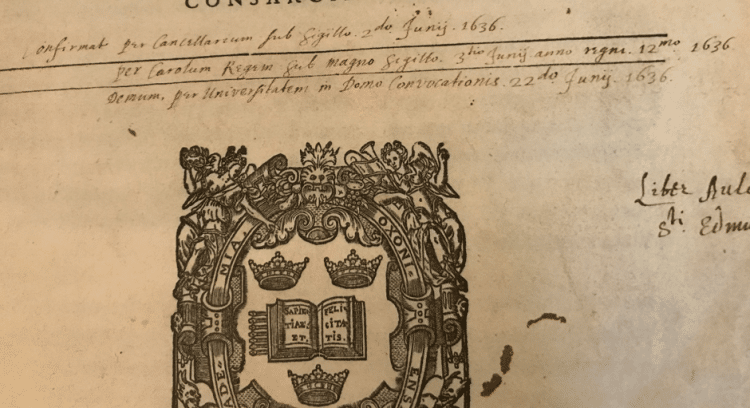
The Laudian Statutes: printing and annotating
After William Laud, Archbishop of Canterbury under Charles I, became Chancellor of the University in 1630 he immediately began the process of revising the medieval statues which governed it. A proposed text was completed in 1634, presented to Convocation and put into effect for a trial period. At this point Laud ordered the University Press to print copies for distribution to the Colleges and Halls, writing in July 1634:
“…For my part I thought it expedient that in every House [ie. College or Hall] they might have ye Rule of the publike Government by them, and soe see the way to their duty”
Most of the colleges that were in existence in 1634 still have extant copies of the book, ours is the last surviving copy belonging to a hall just as we are the last surviving hall.
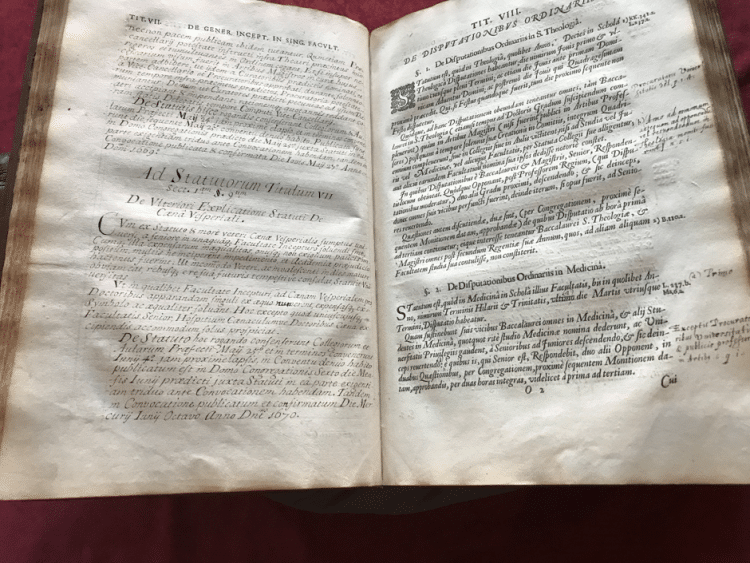
The books were produced with wide margins and many blank leaves so the text could be amended when statutes changed or were added. Our copy is printed on paper and is fairly modestly bound and decorated but many of the other surviving copies are much grander affairs printed on vellum and some, such as the copy at All Souls, with highly decorated gilded covers.
The copy at St John’s was presented to the College by Laud himself (who was an alumnus) but it appears everyone else had to purchase them. The Balliol copy, in vellum but with a very plain binding, has note that it cost £1 13 shillings and four pence (around £275 today). Cost is almost certainly the reason that our copy is printed on paper rather than vellum.
The new statutes, slightly amended from the 1634 printing, were confirmed by King Charles I and promulgated in 1636. A manuscript of the final version, the Codex Authenticus was made as the authoritative version of the text (‘the future judge of all statutes’ wrote Laud).
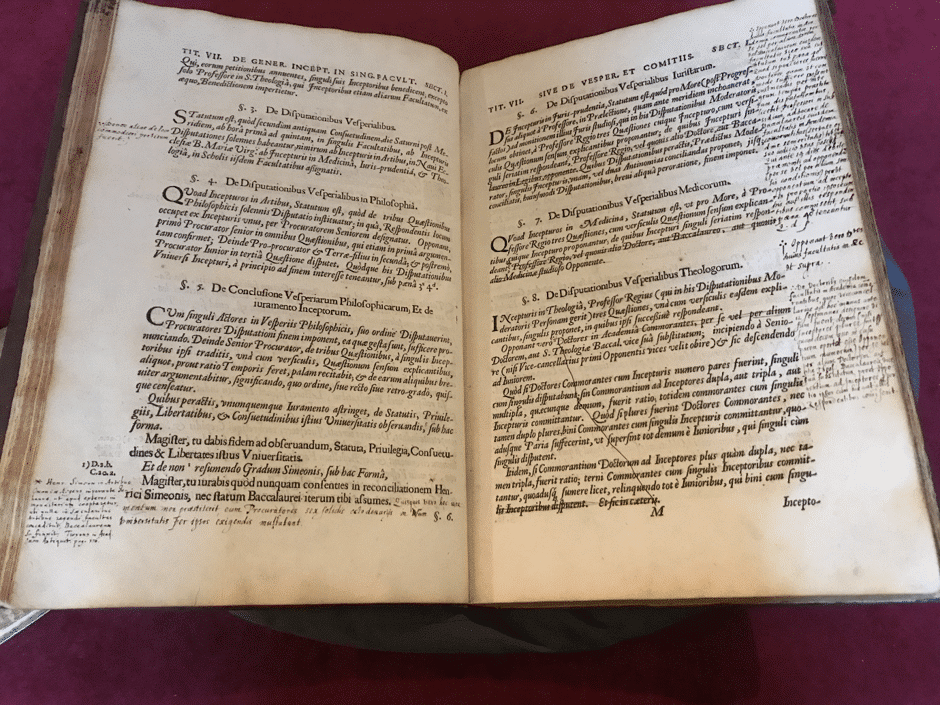
All of the copies I have examined (I’ve looked at the copies in All Souls, Queens and Balliol as well as an online version of one of Bodleian’s copies) share an initial layer of annotation to bring the printed copies into line with the final version. Some items crossed out and others inserted. The amendments in the different copies are not all in the same hand but there are signs that this was a co-ordinated effort or that there was an exemplar copy used.
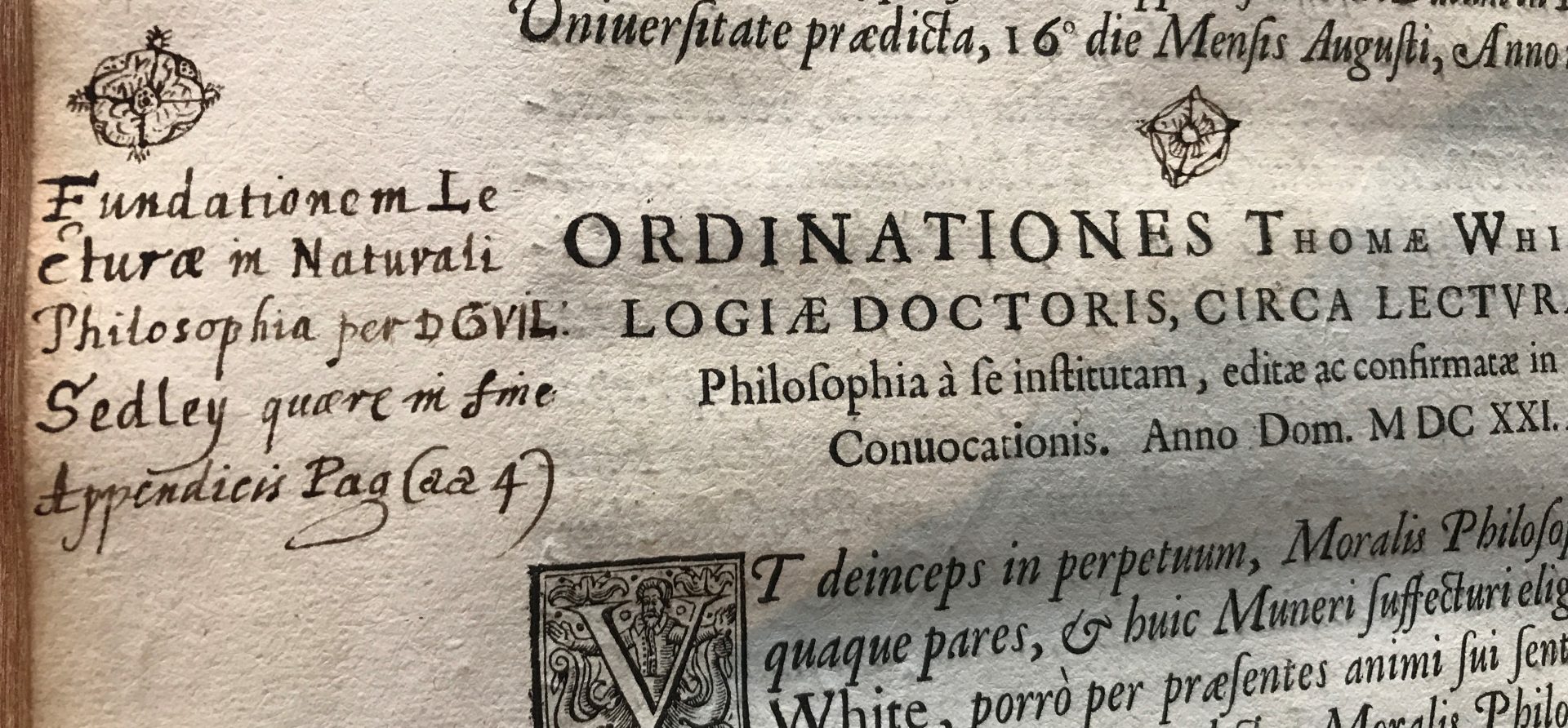
Later additions and annotations
After 1636 the annotations and amendments in different copies of the statute books start to diverge. For example, the All Souls and Balliol copies add the (from a Royalist perspective) martyred William Laud and Charles the I to the list of benefactors to be commemorated by the University, whilst Queen’s copy makes a special note of their unique right to appoint the Principal of St Edmund Hall (the principals of the other halls were appointed by the Chancellor). Although our copy does not mention Queen’s power of appointment, the section on the statutes governing halls is unsurprisingly one of the most annotated parts of the books, with notes by many hands on some pages.
How new statutes are recorded varies. In our copy in several places printed versions of new statutes have been bound into the volume rather than added by hand in the blank pages. How frequently and for how long the text was updated also varies between copies. Most seem to have ceased to be in use by the middle of the 18th century even before a new, updated version of the statutes was printed in 1768. The Hall copy however carried on in use for far longer, inserted sheets record meetings of convocation in 1796 and as late as 1809. Perhaps purchase of the new printing of the statutes was an expense too far for the always cash-strapped Hall so it clung on to the older copy.
Whose book is it anyway?
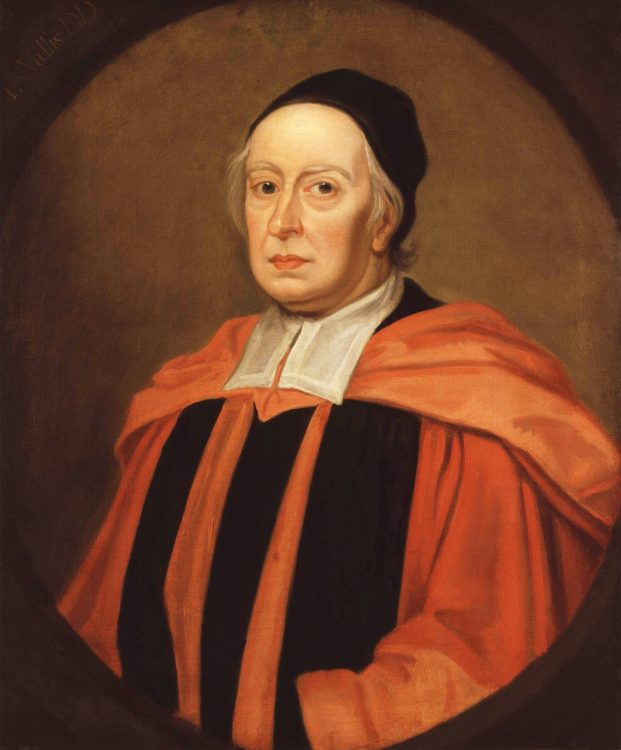
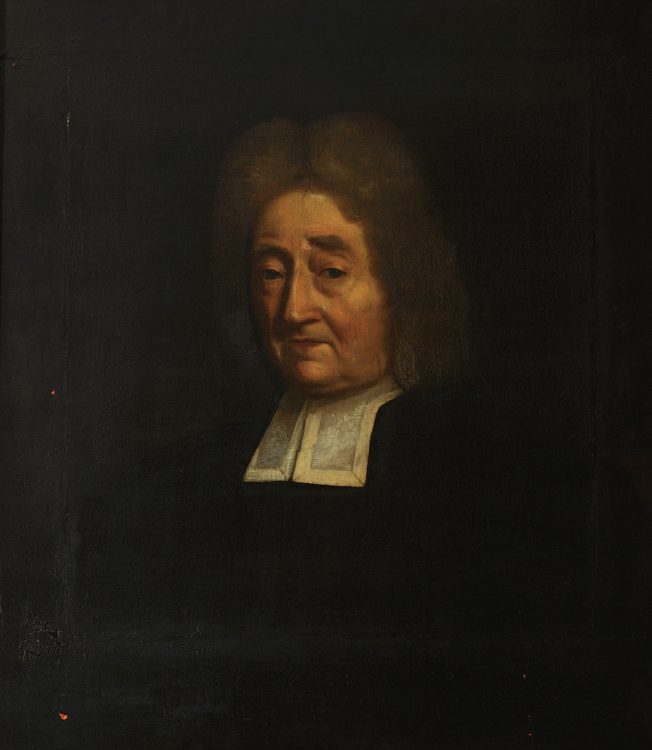
In fact, the Hall almost lost possession of the statutes book long before the 19th century. At the front of our copy of the statutes are two handwritten memoranda record a dispute in 1661-2 over the ownership of the book between John Wallis, the noted mathematician and cryptographer for the Parliamentarian side in the English Civil War, and Thomas Tullie, Principal of Teddy Hall from 1658-76).
Wallis, who was the Savilean Professor of Geometry, had become the Keeper of the University Archives (‘Custos archivorum’) in a heavily disputed election in 1658. His claim to the book rested on the fact that it had been found amongst the papers of his predecessor as Custos, Gerard Langbaine, the Provost of Queens.

Tullie’s answering memorandum however asserts that Langbaine had only borrowed it from Adam Airay, Tullie’s own predecessor as Principal of the Hall (he was Principal from 1631-1658) , and that the volume is in fact the Hall’s own ‘official’ copy of the book. Langbaine had simply not got round to returning it before his death in February 1658. As Airey himself died in December of the same year some confusion is perhaps understandable (this kind of complication is precisely why we are so stern in asking students not to lend books to friends in other colleges); however, Tullie goes further and questions the sincerity of Wallis’s account, saying ‘he pretended’ that it belonged to the Keeper of the Archives.
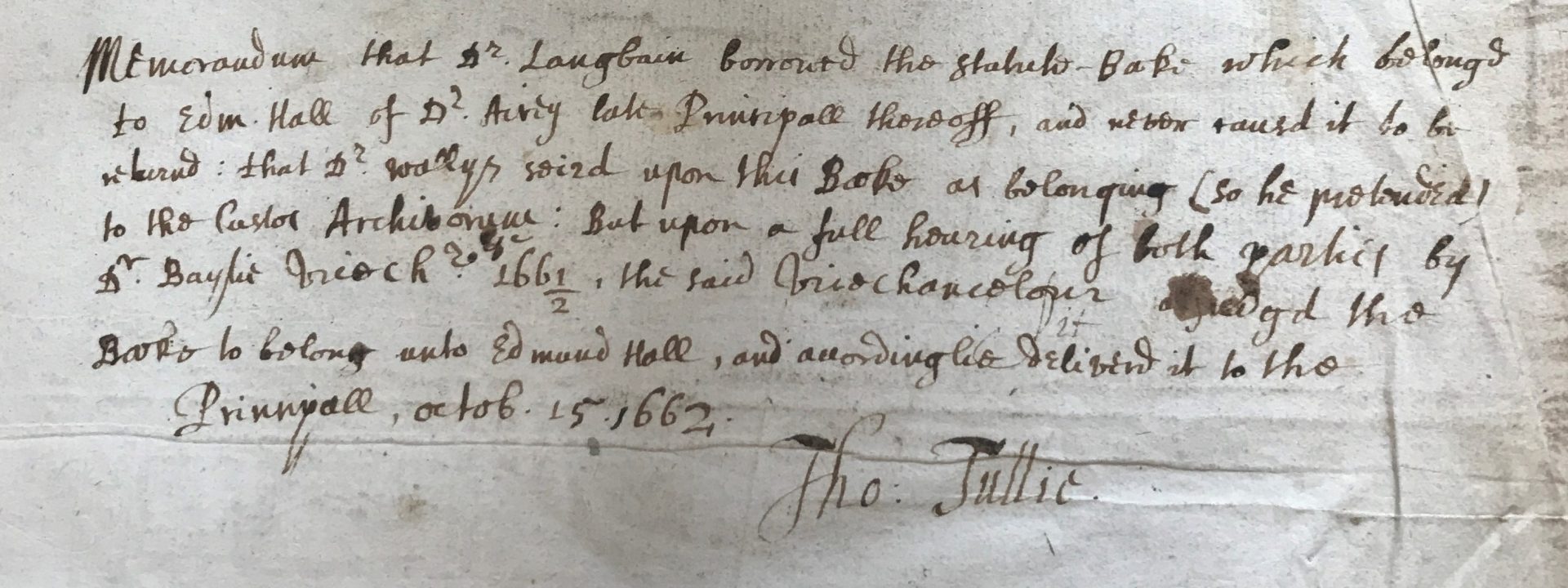
Unsurprisingly, the dispute ended up in court, or at least at a hearing before the Vice-Chancellor, Richard Baylie. He found in favour of Tullie and the book remains ours.
Tullie’s principalship began something of a golden era for Teddy Hall in the latter part of the 17th century, and this successful assertion of the Hall’s right to the book is an early sign of that.
Tullie’s account also confirms the statutes book to be the book which, as far as we know, has been in the Hall’s possession for the longest time, predating the construction of the Library (1679-82) and even the establishment of working collection in the 1660s.
‘You shall swear to maintain the honour & good name of this Hall’: glimpses of Hall Life in the endleaves
At the back of the book are various handwritten notes. Some are about University rules and life, for example the time table for University lectures, Monday to Saturday at 8am, 9am, 10am and 1pm. The timings and subjects were laid down in the statutes so geometry lectures were at 8 in the morning on Saturdays year in and year out and presumably planning was more straightforward in the Early modern period for both students and University administrators. Also listed are the days when doctors had to wear their scarlet gowns, including on the afternoon of Easter day at a service in St Peter-in-the-East (now of course our New Library).
Others relate to Hall life. There is the Latin oath of admittance to be sworn to become a member of the Hall; the preamble notes that a prospective student must be with in at least 3 months of their fifteenth birthday.
There is also the text of an oath of office, in English, for Hall servants – the roles mentioned are the cook, the butler and the manciple (the person in charge of the purchase of food and stores). College officers are enjoined to ‘not reveal the secrets’ of the Hall and to avoid ‘false putting on’ that is overcharging for meals or services.
My favourite thing though in the whole book is the oath that must be taken before admittance to the Library. Would-be readers must promise, on the Bible, to enter the library silently, with a mind to study and not ‘do anything or things to steal, alter, scratch, deface, cut, tear, annotate, write between the lines of, willingly spoil, stain or in any other way damage, abuse, impair or diminish the books.’ Very much sentiments we would still endorse for today.
(Left) Oath of admittance to the Library for a student of St Edmund Hall and (Right) Oath for the Servants and Officers of the Hall
Oath for the Servants and Officers of the Hall Transcript:
“You shall swear to maintain the honour & good name of this Hall, and all rights, profits & Privileges of the same. You shall not reveal the Secrets of it, nor willingly do any wrong or injurie to it, or any that live in it by false putting on or otherwise. But you shall in all things honestly, diligently & faithfully execute your office & place (of Manciple, Cook or Buttler) so long as you continue in it, according to your best witt and skill.So help you God, and by the Contents of this Book.”
Oath of admittance to the Library Transcript:
(Very, very rough) Translation: “You will swear, in the holy presence of God, most good, most great, to undertake that as often as you come into the Library of this Hall of Saint Edmund you will arrive with a mind toward study through moderation and you will adopt silence. You will handle the books and the rest with care so that they survive for the longest time they may be able to. Also you will not in your own person do anything or things to steal, alter, scratch, deface, cut, tear, annotate, write between the lines of, willingly spoil, stain or in any other way damage, abuse, impair or diminish the books; nor will you aid anyone else, whosoever, who is the doer of these things in perpetrating them; but as much as they are transgressing you will impede them; And denounce the crimes of them to the Principal of this Hall or his Deputy: so help you God, holding this sacrosanct gospel of Christ.”
Category: Library, Arts & Archives
Author

James
Howarth
James has been St Edmund Hall’s Librarian since May 2018. He is responsible for maintaining and developing the library’s collections – including the historic and special collections that are housed in the seventeenth-century Old Library and is keen to promote their use in research, study and outreach.